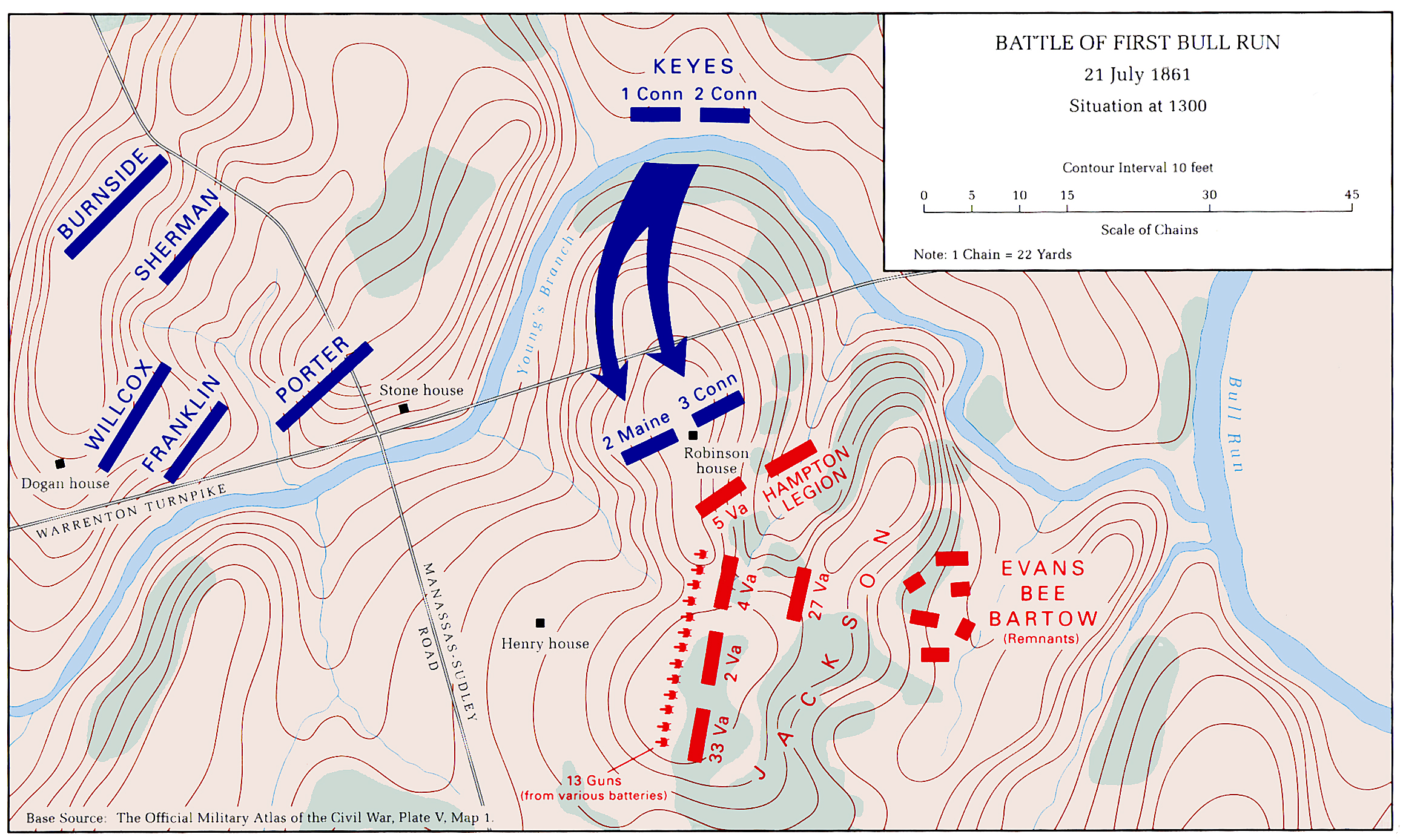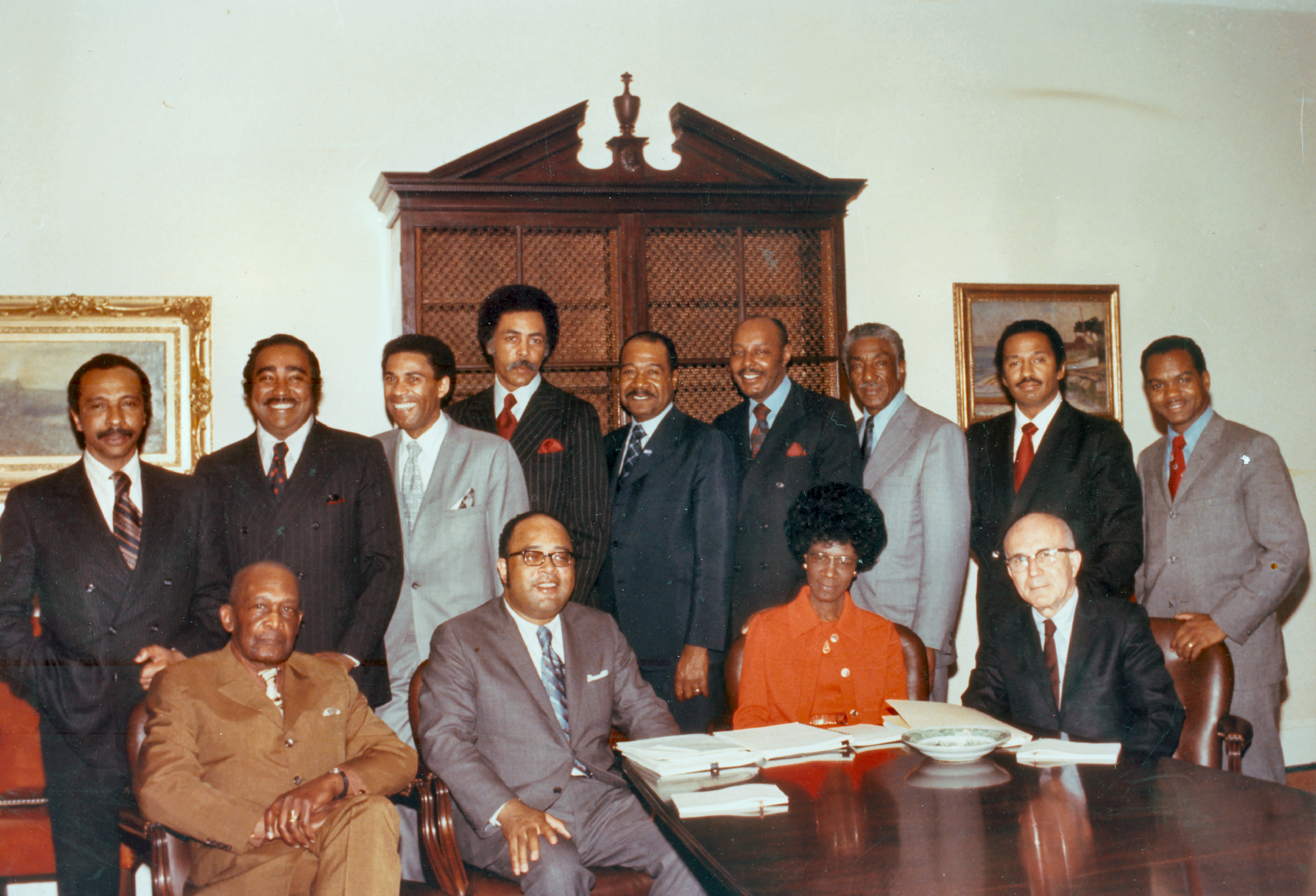|
Gentleman Jim Robinson
James Robinson (October 6, 1799 – October 15, 1875), known as Gentleman Jim, was born on the Pittsylvania Plantation of Landon Carter, Jr. to a freewoman by the name of Susan aka "Annah". He first rose to prominence as one of the wealthiest African Americans in the Manassas area, but is also known because his homestead was located between the lines of the Confederate and Union armies during two major battles of the Civil War. Biography James Robinson aka "Gentleman Jim," was born free and landed. He also received an education from the same private tutor that taught his half sister Judith Carter. The homestead he built in Bull Run couldn't have been more prominent at the outset of the Civil War, during which two major battles were fought in his front yard. All of the above would have been enough to make him noteworthy; however "Gentleman Jim," was to become the 3rd richest African freedman through much of his own initiative. Using the privileges that came with being a freedma ... [...More Info...] [...Related Items...] OR: [Wikipedia] [Google] [Baidu] |
Bull Run, Prince William County, Virginia
Bull Run is a census-designated place (CDP) in Prince William County, Virginia. The population was 14,983 at the 2010 census. History Two major battles of the American Civil War, the First Battle of Bull Run and the Second Battle of Bull Run, took place in the vicinity of Bull Run. Ben Lomond Plantation was listed on the National Register of Historic Places in 1980. Geography Bull Run is located at (38.785090, −77.523577). According to the United States Census Bureau, the CDP has a total area of 2.7 square miles (6.9 km2), all of it land. Demographics As of the 2010 census, there were 14,983 people, 5,602 households, and 3,334 families residing in the CDP. There were 5,946 housing units. The racial makeup of the CDP was 46.9% White, 20.1% Black or African American, 0.6% American Indian and Alaska Native, 7.2% Asian, 0% Native Hawaiian and Other Pacific Islander, 19.7% from other races, and 5.6% from two or more races. Hispanic or Latino of any race were 36.9 ... [...More Info...] [...Related Items...] OR: [Wikipedia] [Google] [Baidu] |
Robinson House (Manassas, Virginia)
Robinson House sits at the bottom of Henry Hill, near Bull Run in Virginia. The house was named for the family of James "Gentleman Jim" Robinson, a free African American, who built the house. The Robinson family, descendants of Gentleman Jim, owned and occupied the house and a large portion of the land around it from the 1840s until 1936. The National Park Service acquired this parcel as part of their effort to commemorate two major battles of the American Civil War, the First and Second battles of Bull Run (also known as First and Second Manassas) which occurred about one year apart. Both battles were Confederate victories. However, Robinson House managed to survive virtually unscathed. Pre-Civil War The homestead was constructed in the 1840s by James "Gentleman Jim" Robinson, an African American, on land he purchased from local planter John Lee. James would become the third richest African American in the area.Biography of James Robinson http://www.nps.gov/mana/forteachers/up ... [...More Info...] [...Related Items...] OR: [Wikipedia] [Google] [Baidu] |
Landon Carter, Jr
Landon is a personal name of English origin that means "long hill". It is a variant of Langdon. Landon became popular in the United States in the 1990s, and by 2010 had become the 32nd most popular name for boys. BehindtheName.com. Notable people with the given name "Landon" include A * (born 1984), American actorB * (born 1995), Canadian ice hockey player * |
Pittsylvania Plantation, Virginia
Pittsylvania may refer to *Pittsylvania County, Virginia, USA *an early name for the proposed Vandalia (colony) See also *Pittsburgh, Pennsylvania Pittsburgh ( ) is a city in the Commonwealth (U.S. state), Commonwealth of Pennsylvania, United States, and the county seat of Allegheny County, Pennsylvania, Allegheny County. It is the most populous city in both Allegheny County and Wester ... * Pottsylvania {{Disambiguation ... [...More Info...] [...Related Items...] OR: [Wikipedia] [Google] [Baidu] |
Pittsylvania Plantation
Pittsylvania may refer to *Pittsylvania County, Virginia, USA *an early name for the proposed Vandalia (colony) See also *Pittsburgh, Pennsylvania Pittsburgh ( ) is a city in the Commonwealth (U.S. state), Commonwealth of Pennsylvania, United States, and the county seat of Allegheny County, Pennsylvania, Allegheny County. It is the most populous city in both Allegheny County and Wester ... * Pottsylvania {{Disambiguation ... [...More Info...] [...Related Items...] OR: [Wikipedia] [Google] [Baidu] |
Henry House Hill
Henry House Hill is a location near Bull Run in Virginia. Named for the house of the Henry family that sits atop it, the hill begins near the road of Centreville, Virginia, after Gainesville, Virginia, to the today's U.S. Route 29, the Warrenton Turnpike. It is a slow, constant rise toward the south over a length of approximately 730 meters. This hill was an important site of the battles of First and Second Bull Run (also known as First and Second Manassas) in the American Civil War. The battle raged on the north side of the hill in predominantly open grass country; the south side was relatively closely covered with trees. The hill received its name from Dr. Isaac Henry, who lived with his family in a house on the plateau of the hill. On July 21, 1861, the house was inhabited by his widow, Judith Carter Henry, and their two sons. The 85-year-old woman was bed-ridden and unable to leave the house. Mrs. Henry was mortally wounded when a projectile of the Union artillery crashed thr ... [...More Info...] [...Related Items...] OR: [Wikipedia] [Google] [Baidu] |
First Battle Of Bull Run
The First Battle of Bull Run (the name used by Union forces), also known as the Battle of First Manassas (the name used by Confederate forces), was the first major battle of the . The battle was fought on July 21, 1861, in , just north of the city of Manassas and about thirty miles west-southwest of Washi ... [...More Info...] [...Related Items...] OR: [Wikipedia] [Google] [Baidu] |
Second Battle Of Bull Run
The Second Battle of Bull Run or Battle of Second Manassas was fought August 28–30, 1862, in Prince William County, Virginia, as part of the American Civil War. It was the culmination of the Northern Virginia Campaign waged by Confederate Gen. Robert E. Lee's Army of Northern Virginia against Union Maj. Gen. John Pope's Army of Virginia, and a battle of much larger scale and numbers than the First Battle of Bull Run (or First Manassas) fought on July 21, 1861 on the same ground. Following a wide-ranging flanking march, Confederate Maj. Gen. Thomas J. "Stonewall" Jackson captured the Union supply depot at Manassas Junction, threatening Pope's line of communications with Washington, D.C. Withdrawing a few miles to the northwest, Jackson took up strong concealed defensive positions on Stony Ridge and awaited the arrival of the wing of Lee's army commanded by Maj. Gen. James Longstreet. On August 28, 1862, Jackson attacked a Union column just east of Gainesville, at Brawn ... [...More Info...] [...Related Items...] OR: [Wikipedia] [Google] [Baidu] |
Bull Run (Occoquan River)
Bull Run is a U.S. Geological Survey. National Hydrography Dataset high-resolution flowline dataThe National Map, accessed August 15, 2011 tributary of the Occoquan River that originates from a spring in the Bull Run Mountains in Loudoun County, Virginia, and flows south to the Occoquan River. Bull Run serves as the boundary between Loudoun County and Prince William County, and between Fairfax County and Prince William County. Bull Run is primarily associated with two battles of the American Civil War: the First Battle of Bull Run (July 21, 1861) and the Second Battle of Bull Run (August 28–30, 1862), both Confederate victories. A narrow part of the creek called Yates Ford (near Manassas) is the scene of the Battle of Occoquan, and downstream about one mile is the current Yates Ford Road bridge between Fairfax and Prince William counties. See also *List of rivers of Virginia This is a list of rivers in the U.S. state of Virginia. By drainage basin This list is arranged by ... [...More Info...] [...Related Items...] OR: [Wikipedia] [Google] [Baidu] |
Edward W
Edward is an English given name. It is derived from the Anglo-Saxon name ''Ēadweard'', composed of the elements '' ēad'' "wealth, fortune; prosperous" and '' weard'' "guardian, protector”. History The name Edward was very popular in Anglo-Saxon England, but the rule of the Norman and Plantagenet dynasties had effectively ended its use amongst the upper classes. The popularity of the name was revived when Henry III named his firstborn son, the future Edward I, as part of his efforts to promote a cult around Edward the Confessor, for whom Henry had a deep admiration. Variant forms The name has been adopted in the Iberian peninsula since the 15th century, due to Edward, King of Portugal, whose mother was English. The Spanish/Portuguese forms of the name are Eduardo and Duarte. Other variant forms include French Édouard, Italian Edoardo and Odoardo, German, Dutch, Czech and Romanian Eduard and Scandinavian Edvard. Short forms include Ed, Eddy, Eddie, Ted, Teddy and Ned. Pe ... [...More Info...] [...Related Items...] OR: [Wikipedia] [Google] [Baidu] |
Carl Stokes
Carl Burton Stokes (June 21, 1927 – April 3, 1996) was an American politician and diplomat of the Democratic Party who served as the 51st mayor of Cleveland, Ohio. Elected on November 7, 1967, and taking office on January 1, 1968, he was one of the first black elected mayors of a major U.S. city. Early life Stokes was born in Cleveland's Central neighborhood, the son of Louise (Stone) and Charles Stokes, a laundryman who died when Carl was two. He and his brother, politician Louis Stokes, were raised by their mother at the CMHA's Outhwaite Homes. Stokes was a strong student, but in 1944, he dropped out of high school and took up work at Thompson Products (later TRW). At 18, he joined the U.S. Army and returned to Cleveland after his discharge in 1946. After earning his diploma at East Technical High School the following year, Stokes, who was inspired by civil rights activist Paul Robeson, decided to pursue a career in public service. After attending several colleges, h ... [...More Info...] [...Related Items...] OR: [Wikipedia] [Google] [Baidu] |
Louis Stokes
Louis Stokes (February 23, 1925 – August 18, 2015) was an American attorney, civil rights pioneer and politician. He served 15 terms in the United States House of Representatives – representing the east side of Cleveland – and was the first African American congressman elected in the state of Ohio. He was one of the Cold War, Cold War-era chairmen of the House Intelligence Committee, headed the Congressional Black Caucus, and was the first African American on the House Appropriations Committee. Early life Stokes was born in Cleveland, Ohio, the son of Louise (née Stone) and Charles Stokes. He and his brother, politician Carl B. Stokes, lived in one of the first federally funded housing projects, the Outhwaite Homes. Stokes attended Central High School (Cleveland, Ohio), Central High School and later served in the U.S. Army from 1943 to 1946. After attending Case Western Reserve University, Western Reserve University and Cleveland-Marshall College of Law on the G.I. Bill, S ... [...More Info...] [...Related Items...] OR: [Wikipedia] [Google] [Baidu] |


